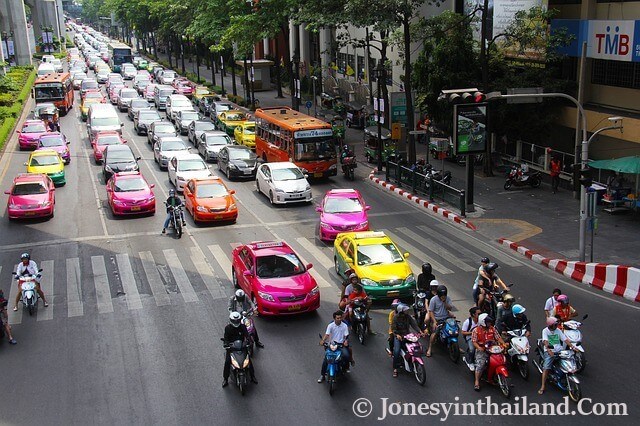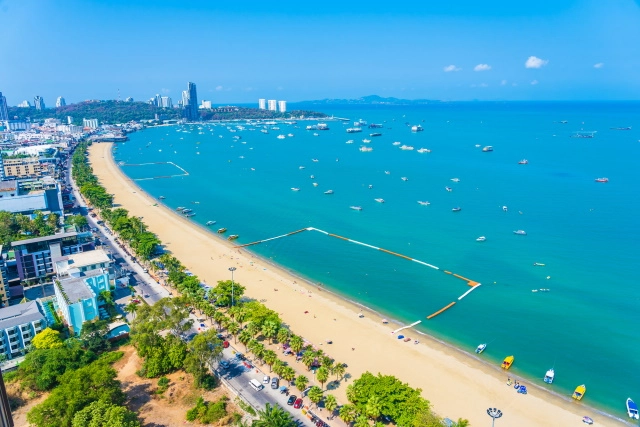Bolt Taxi Thailand Review – Using the App and Service
-- Last Updated on December 9, 2022 by Jonesy
In Thailand, more and more transport applications are appearing which make getting around much easier than ever before.
Grab has been the major player for the last few years when it comes to ride-hailing apps (after taking over Uber and pretty much eradicating any serious competition). Yet Bolt is one of the most recent additions to the Thai transportation application market that has steadily been gaining popularity.
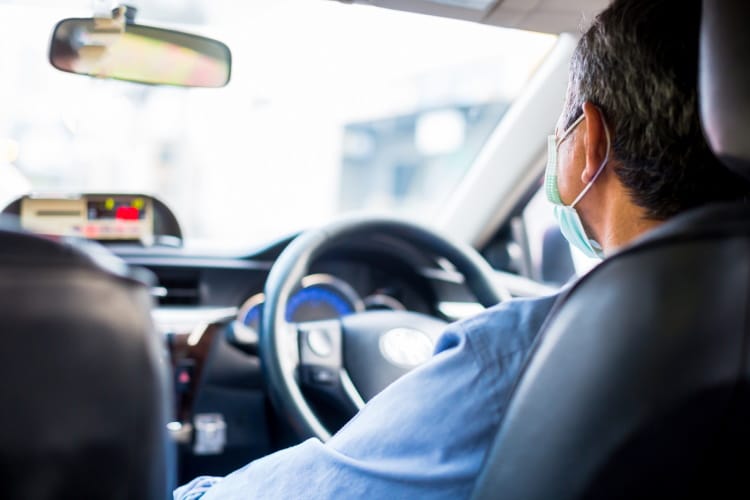
The app first conquered Eastern Europe and then other regions like Africa before appearing in Thailand in 2020. The ride-hailing services of Bolt have now brought it to prominence as a direct competitor to Grab, not least of all due to its significantly lower fares. The European-based app offers various transportation services along with other options such as food delivery.
The fact that the cost of using this service is closer to that of a regular taxi metre, on top of the ever-inflating prices of the virtually monopolised Grab, is not entirely lost on Thai people. One of the first concerns in this part of the world when it comes to making decisions will always be the comparable cost.
So although Grab currently remains the most prominent name in the Thailand ride-hailing market, there have been concerns for a while now that the company is using its monopoly to increase prices and add extra charges unfairly. But maybe the day of reckoning has come.
So what is Bolt?
The Estonian company behind Bolt first developed the app back in 2013, the brainchild of one Markus Villig. The original name was Takso when it was launched in Estonia to begin with, then it changed to Taxify, and finally to Bolt.
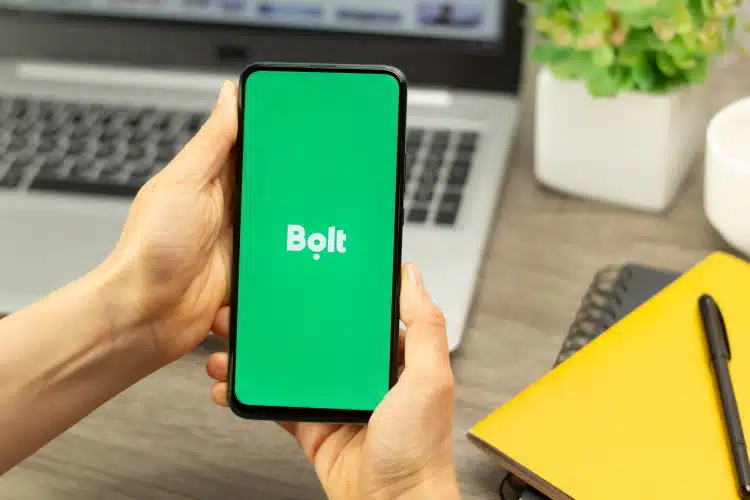
When Bolt launched its services in Thailand, it did so by taking ground-breaking steps for a transport application—basically committing to zero driver commission for six months, as well as operating fares at a much lower rate than the existing market. This did no harm at all in helping Bolt establish its reputation in Thailand.
Thailand is the only Southeast Asian country that Bolt now operates in, but it is growing steadily in visibility and usage. Users report short trips for under 50 Baht (similar to a regular metered taxi but impossible with Grab), as well as a quick and reliable service using the latest models of vehicle.
Reports also indicate that prices (particularly on the shorter trips) can be as much as 3 or 4 times lower than those using other transport apps. Hmmm. I’m not sure whether that extends to longer journeys or not but my own experience of a 120 baht fare that would normally be more than 200 baht for a 20-minute journey confirms that rates are indeed lower.
Although on paper the pricing structures of Bolt don’t look that much different from other operators, many users report more affordable rates than other operators, which is apparently due to the lower commissions.
If this continues it’s not that difficult to see how Bolt will most likely become the ride hailing app of choice for users in Thailand. The company theory is that more drivers will also choose to support this app, which at the moment is reported to provide a more rapid response when booking a ride, which again I can confirm through first-hand experience.
What Areas are covered and What Transport Services are offered by Bolt?
At the moment you’ll only be able to find Bolt services in cities and some of the larger, most populated areas of Thailand, namely Bangkok, Chiang Mai, Phuket, and Pattaya.
The vehicles included in the current Bolt repertoire in Thailand include:
- Taxis
- Lucky Dip (nearest private cars or taxis)
- Comfort (premium cars)
- Ladies (female driver)
- XL (6-seater)
- Motorbikes
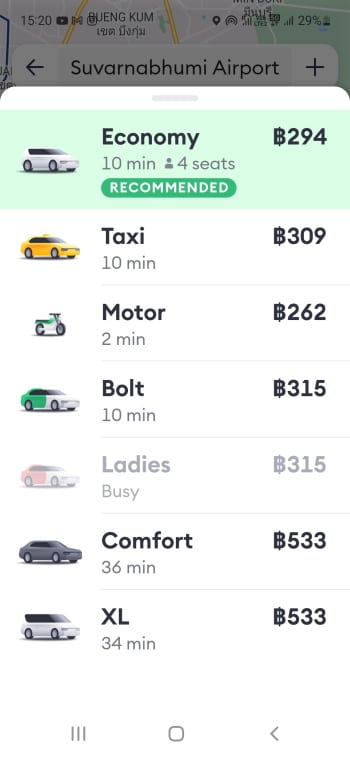
Aside from the standard taxi (which many users will actually try and bypass in order to avoid any of the issues commonly-associated with this type of driver) Bolt offers a variety of other vehicles. This includes specific options like the women-only ride option with a female driver—another angle that works well in Thailand for obvious reasons.
Not only has this option created a safer travelling environment for women, especially late at night, but it has also created inroads as far as allowing Thai females additional earning opportunities in what is a typically male-dominated driver market.
How safe is Bolt in Thailand?
Aside from the obvious benefits of the female-only ride service, Bolt Thailand also comes with additional safety features such as an emergency assistance button. Apparently this connects to local police, although I have no knowledge of anyone who can confirm it, and on top of that there is a driver rating option and a lost and found feature.
As with any ride-hailing service, always check the booking profile matches with your actual driver before jumping in. This relates not only to the destinations involved, but also to both the vehicle and the driver ID (which are supplied before the actual pick-up when making the booking).
How to Use the Bolt Application
The app is available for download on IOS or Android, and as with most other similar services you’ll need a registered phone number to get started. Don’t worry if you are a tourist though, as the phone number connected to your Bolt account doesn’t need to be a registered Thai number.

First you need to download, install, and set up the account for the application on the device you will be using it with. This step requires your registered phone number. Once everything is installed and set up on your device you’ll be ready to use the transport app for making bookings. The following steps will allow you to do just that:
- Select destination
- Select preferred vehicle from the list of options
- Confirm pick-up and drop-off points (check this carefully)
- Click Confirm Order button
- The app will then find the nearest driver for you (which is reportedly quicker than some of the other apps)
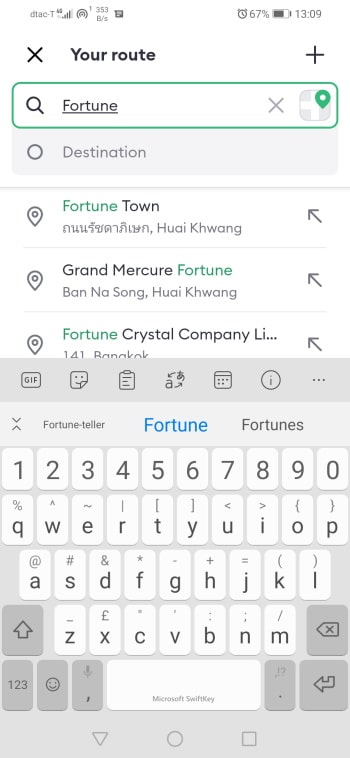
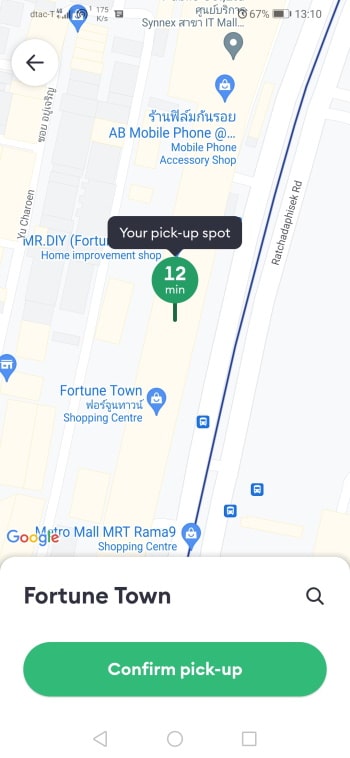
Additional Fees
So we know that the main selling point of the Bolt transport application is most likely related to the cost of the fares. However, this depends to some extent on the type of vehicle, as well as the total distance to your destination.
This could mean a fair amount of use is required before deciding whether fares are actually as low as they appear to be or not when other factors are involved. An estimate of the total journey will be shown by the app initially, but this could change according to a number of other factors like necessary or requested route changes, congestion, and any highway toll fees incurred.
On top of that, using the Bolt application may also incur the possibility of additional fees for:
- Unplanned stops and any waiting time (2-3 baht per minute after 5 minutes’ waiting)
- Changing the final destination (even if you mistakenly selected the wrong one)
- Surge price
- Cancellation
- Airport pickup / drop off surcharges
- Tolls (expressway)—Thailand has tolled expressways that are meant to help drivers avoid high-congestion roads, and the fees for using them (around 40 baht) are not included in the price estimate. They are paid directly to the driver unless they are added to the journey total, but you do need to clarify this first as well as being aware that you are under no obligation to take the tollway route.
Bolt Payment Options
The only potential downside—if you can call it that—is that Bolt payment options are currently cash only in Thailand. Therefore, having some cash (and plenty of change) on hand when using the service is necessary—something that won’t go down well with some Thais who have long since dispensed with the inconvenience of exchanging grubby loose change with strangers.
If you simply can’t bring yourself to do this and you have a local Thai bank account, you will find that the driver has a QR code that enables you to transfer the fare straight into their account if you are okay with that.
Is Bolt too Good to be True?
Time will tell on this one. However, there are already rumours that the plan is to take over the market and then start the increases. Whether these rumours have any foundation is another matter entirely, although considering the same thing has already happened with other high-use applications, it remains a distinct possibility.
Are there any other Downsides or Challenges Related to the Bolt Experience?
Well…there have been a few less than favourable reports on expat forums and other review sites, largely from westerners in some of the more touristy areas like Pattaya. These comments are usually related to drivers complaining about receiving low rates, which hardly makes for a comfortable journey, however long or short.
Unfortunately this is one of the typical traits of the ‘standard’ (metered) Taxi driver (rather than a private car owner) trying to secure a large tip—the very thing that many users are trying to avoid. The fact is though—many of these drivers will have taken to using the app in a bid to secure more customers and on promises of high returns.
The only sure-fire way to avoid this, as is the case with any of the other transport apps, is to select the private car option and dispense with the taxi altogether. The price is slightly more but often worth it to avoid this particular breed of Thai driver.
What other Services Does the App Cover?
If none of the available services fit your business profile Bolt also offers Business Travel to allow companies to manage the transportation of their employees.
On top of that, the application can also be used to order food deliveries and in some countries grocery shopping. However this latter service is not yet available in Thailand and is pretty much monopolised by Grab at the moment as you will see from the sheer number of delivery bikes on the road.
The Bottom Line
At the end of the day, using transport applications like Bolt in Thailand means getting around is significantly less of a nightmare than it ever has been. It is now much easier to arm yourself with all the necessary knowledge and avoid the potential pitfalls by coming equipped with information and applications.
Also, as more options are constantly appearing, many operators are forced to adhere to the guidelines more than ever before, ensuring a more comfortable user experience than ever before. The alternative would likely be dealing with the moody and uneducated driver from the sticks with no English language skills. This driver isn’t particularly service-minded in any way and more likely sees you as some form of prey.
When all is said and done though, even if they are not yet completely failsafe, the introduction of transport applications like Bolt has done much to improve many existing road transport issues in Thailand, to the point where soon it will be hard to imagine life in the land of smiles without them!
— Comparison Article: Grab Taxi vs Bolt in Thailand – Which Taxi App Service is Best?

Mark Philip is a writer and lifestyle enthusiast from the Midlands in the U.K. With a background in martial arts and fitness, Mark upped sticks and headed out to Bangkok to delve a bit deeper into the art of Thai Boxing way back in the 2000s, starting to write initially to fund his daily training and escape the rigours of ESL teaching. Since then Mark has authored e-books, articles, and blogs across a wide range of topics for commercial, educational, factual, health & fitness, lifestyle, wellness, and leisure-based purposes.
Related Articles
- Transport In Thailand – Transportation Guide
- Thailand Taxi Advice and Tips
- Grab Taxi Thailand Review – Using the App and Service
- Train Travel in Thailand – Guides for Tourists
- Bangkok Transport Guide – Getting Around Easily & Conveniently
- Tuk Tuks In Thailand – Tips and Advice
- Foreigners Driving in Thailand
- Bangkok Travel Guides
- Where to Stay in Bangkok?

